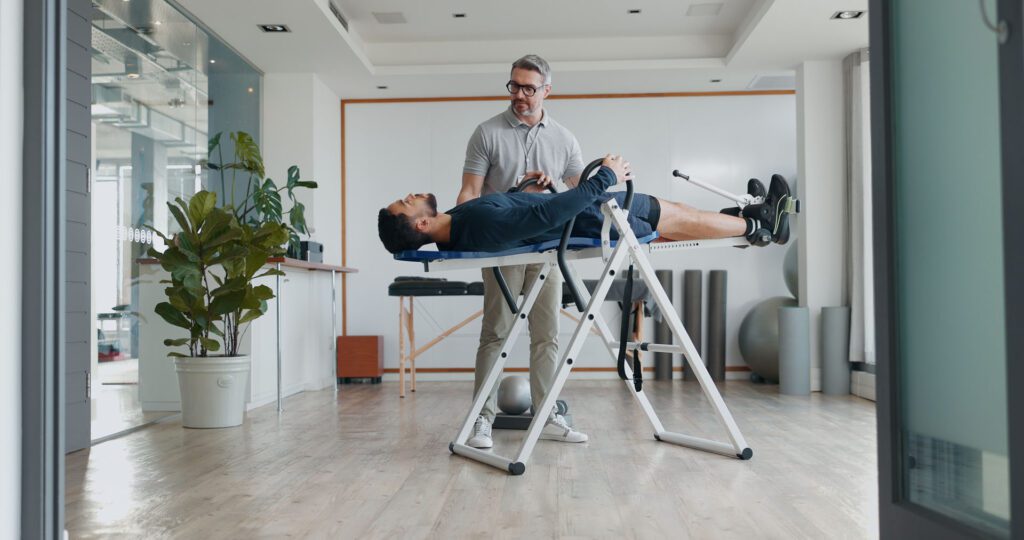Chiropractic and Integrative Care for Retraining Muscles After a Motor Vehicle Accident

Introduction
Motor vehicle accidents can leave lasting effects on the muscles, ranging from soreness and stiffness to more severe injuries like tears and chronic weakness. In many cases, the force of impact disrupts muscle coordination, nerve communication, and normal movement patterns. This is why rehabilitation after an accident must go beyond pain relief—it should focus on retraining muscles so they can function properly again.
Chiropractic care, when paired with integrative therapies such as physical therapy, massage, and acupuncture, offers a multi-layered approach to muscle recovery. By addressing spinal alignment, nervous system function, tissue quality, and muscle strength, this type of care supports the body’s natural healing processes while reducing the risk of long-term complications (Denver Colorado Chiropractic, n.d.).
Understanding Muscle Injuries After an Accident
After a collision, muscles may sustain damage from direct trauma or from secondary effects like joint misalignment and nerve irritation. Common issues include:
- Muscle strains and tears from overstretching during impact.
- Protective muscle spasms that limit movement.
- Scar tissue that reduces flexibility.
- Compensation patterns where uninjured muscles overwork to protect damaged areas.
If these problems aren’t addressed, they can contribute to chronic pain, reduced mobility, and posture problems. Chiropractic care helps by correcting structural issues that interfere with normal muscle function, while integrative therapies work to restore tissue health and strength (Pain Care LR, n.d.).
Chiropractic Care’s Role in Muscle Retraining
Chiropractic adjustments target misalignments that can disrupt nerve signals to muscles. Without clear nerve communication, muscles may remain tense, weak, or poorly coordinated. Adjustments restore alignment, reduce nerve irritation, and create an environment where muscles can respond better to rehabilitation exercises (Dallas Accident and Injury Rehab, n.d.).
A key part of post-accident chiropractic care is neuromuscular reeducation—teaching muscles how to activate properly again. This may involve guided movements, postural corrections, and targeted stretches or strengthening exercises. The aim is to break faulty movement patterns and replace them with balanced, efficient ones (My Evolve Chiropractor, n.d.).
Physical Therapy and Active Rehabilitation
Physical therapy is often combined with chiropractic care to provide the active component of muscle retraining. After an accident, therapeutic exercises help restore flexibility, strength, and coordination. These can include:
- Gentle range-of-motion activities.
- Isometric and resistance-based strengthening.
- Balance and stability training.
- Functional movement drills to prepare for daily activities.
These exercises help maintain the improvements made during chiropractic sessions and reduce the risk of future injury (OAA Orthopaedic Specialists, n.d.; The Summit PT, n.d.).
Massage Therapy for Soft Tissue Healing
Massage therapy works on the muscles and connective tissues to reduce tension, break up scar tissue, and improve circulation. Techniques such as myofascial release and trigger point therapy target problem areas, making muscles more responsive to adjustments and exercise (Utah Accident Clinic, n.d.; Synergy Healthcare Partners, 2024).
Massage also stimulates nerve endings, helping the brain reestablish correct muscle activation patterns. This makes it an important step in neuromuscular reeducation and overall recovery.
Acupuncture and Integrative Medicine
Acupuncture is another therapy often used in accident recovery. It can help reduce inflammation, relax tight muscles, and improve blood flow to injured tissues. Many rehabilitation programs now include acupuncture alongside chiropractic, massage, and physical therapy to create a holistic healing plan (Got Core, n.d.).
An integrative medicine approach looks at the whole person—not just the injury site—considering posture, daily habits, nutrition, and stress levels as part of the recovery process.
Advanced Diagnostics in Muscle Injury Recovery
Accurate assessment is critical before starting any rehabilitation plan. Advanced imaging, such as MRI or ultrasound, helps identify hidden injuries like deep muscle tears, scar tissue, or nerve compression that may not be obvious in a physical exam. These findings guide targeted treatment and ensure that muscle retraining addresses the root problem (Roach Chiropractic, n.d.).
Preventing Long-Term Complications
Effective muscle rehabilitation after an accident should focus on long-term stability, not just short-term relief. Ongoing care may include maintenance chiropractic adjustments, home exercises, and periodic massage or acupuncture to maintain flexibility and muscle balance. This reduces the risk of chronic pain, compensatory injuries, and recurrent strains (Mass General Brigham, n.d.).
Conclusion
Chiropractic and integrative care offer a comprehensive solution for retraining muscles after a motor vehicle accident. By combining spinal alignment, muscle reeducation, soft tissue therapy, and whole-body wellness strategies, patients can restore function, prevent reinjury, and return to their normal activities with greater confidence and comfort.
(Denver Colorado Chiropractic, n.d.)
References
Dallas Accident and Injury Rehab. (n.d.). The role of chiropractic adjustments in recovery.
Denver Colorado Chiropractic. (n.d.). 9 ways chiropractic care can speed up healing for car accident back injuries.
Got Core. (n.d.). Chiropractic care supports your nervous system.
Mass General Brigham. (n.d.). Chronic pain).
My Evolve Chiropractor. (n.d.). What role does a chiropractor play in reducing muscle tension?.
OAA Orthopaedic Specialists. (n.d.). Why is physical therapy so important to your recovery?.
Pain Care LR. (n.d.). Car accident pain relief.
Roach Chiropractic. (n.d.). The phases of chiropractic relief.
Synergy Healthcare Partners. (2024, September 20). Healing through touch: The benefits of massage therapy for injuries after an auto accident.
The Summit PT. (n.d.). Therapeutic exercises play a vital role in physical rehabilitation.
Utah Accident Clinic. (n.d.). Massage therapy.
